Air India is halfway into its transformation programme. We ask the CEO how it’s going.
Links on Head for Points may support the site by paying a commission. See here for all partner links.
Two weeks ago, I was one of the first international journalists to be invited to Delhi to see how Air India’s transformation program is going.
Called ‘Vihaan.AI’ or ‘new dawn’ in Sanskrit, the five-year program is designed to turn the once-ailing carrier into a “modern airline that India can be proud of” and kick-start a new golden age. The first two phases – ‘Taxi’ and ‘Takeoff’ – are already complete. Now Air India is in the ‘Climb’ phase.
You don’t need to look far to see why the airline needs an overhaul. A quick search anywhere unearths a mountain of complaints regarding poor customer service, outdated aircraft, delays and reliability.
In the words of its CEO Campbell Wilson, who joined from Singapore Airlines and subsidiary Scoot, the airline’s last forty years have been marred by “terminal decline”.
Air India’s golden era
It wasn’t always that way. In its first forty years it was a pioneer; the first Indian airline founded by the first Indian aviator, J.R.D. Tata and heir to the Tata family of industrialists. J.R.D. founded the airline in 1932 as Tata Airlines, but its importance to India was quickly recognised by the government. In 1953 it was nationalised and renamed ‘Air India’. In 1962 it became the first airline with an all-jet engine fleet.
Tata continued as chairman of Air India until 1977 – it was his passion project – and under his guidance the airline went from strength to strength, enjoying a reputation for luxury. It painted its new Boeing 747 fleet with the slogan “Your Palace in the Sky” in the 70s.
The richly-decorated interiors showcased contemporary designs inspired by ancient Indian motifs that you could only get away with in the 1970s, whilst the upper deck was home to the Maharaja lounge, a cocktail bar for first class passengers. It was high-key iconic.
Turbulence strikes
Unfortunately, things began to sour in the nineties and early aughts; the airline slid into mediocrity and became a symbol of mismanagement. Air India should have surfed the wake of an unprecedented economic boom in India; instead, it fell further and further behind, ceding passengers to Emirates, Etihad and Qatar Airways who connected India with the world.
In Campbell’s words, “aviation had been seen as the preserve of the rich, and so it was a luxury to be taxed.” As a result, the airline “descended into a little bit of an embarrassment.”
“The old Air India didn’t really have job descriptions, didn’t have performance management, didn’t have rewards for doing well or consequences for not doing well. Promotion was based on tenure, not talent. The systems were archaic, if they even existed. Most of the time it was manual.
“There was no culture of planning in advance if it was even reactionary. In fact, there was even a perverse incentive to not plan and react, because if you could fix the crisis, you could claim credit for fixing a crisis. And so that’s just the absolute antithesis of what a good airline should be.”
By the mid 2010s, it became clear that things could no longer continue. The political approach changed: “The present government sees it very much as a catalyst of economic and social development.”
And so it launched plans to privatise Air India, initially offering a majority stake in the airline whilst retaining a minority stake. When that failed, it went whole hog and sold the airline in its entirety, with Tata Sons re-acquiring the airline in 2022 in a richly symbolic home-coming together with equity partner Singapore Airlines, which owns just over 25% of the new Air India.
Air India’s homecoming
Since then, Campbell and his team have been on a relentless pace to turn the airline around. As you’ll see from my reviews over the coming days, it’s working: my flights from London to Delhi and back were world-class. Not something, in all honesty, I expected to write.
There’s still a lot of scepticism out there. My direct messages were filled with people airing their aversion to the airline, no doubt fuelled by recent social media videos that have gone viral.
That’s despite half of Air India’s fleet now featuring new cabins, albeit this skews towards its shorthaul fleet. A brand new website and app mean the airline has a first-class digital experience and it has also contracted new caterers. Progress so far has been impressive given privatisation only happened in 2022.
Communicating Air India’s ongoing transformation has been a challenge; there’s a reason you haven’t (yet) seen a global advertising campaign for the airline. In fact, as I mentioned above, this is the first time Air India had invited journalists from the UK and US to visit its Delhi hub and experience the new Air India. For now, it is a game of managing expectations.
“Where we don’t offer the latest proposition, we sell on value; that will change. It’ll be another couple of years before our fleet is consistently upgraded. So until then we are ring fencing Heathrow, Delhi and Mumbai with a good product, New York, Singapore, Frankfurt, and presenting the new Air India to those markets. And then not really overselling ourselves elsewhere.”
“But the catering, the crew, the website, that’s consistent. So more and more it is just going to be the physical aircraft product. That is going to be the inconsistency. And as I say, three or four aircraft every month are going to pop out with the new product, so the portion that is anomalous is going to get progressively smaller, but it’s, I mean, that’s the biggest frustration that we want to talk about the new aircraft, new Air India but we have to be patient.”
As always, change does not happen overnight. Air India’s transformation comes at a challenging time for the aviation industry as a whole as it wrestles with supply chain constraints. The airline has 570 Airbus and Boeing aircraft on order, which it claims is the largest order of any single airline, but it has suffered delays to new arrivals.
“My biggest challenge is the harmonisation of the product across the field. It’s not a challenge that we face on our own because the supply chain constraints, whether it’s on delivery of new aircraft or the delivery of seats to retrofit old aircraft is still gummed up after covid.
“We had intended to start our widebody retrofit program of the Boeing 777s and the 787s last year, we actually committed $400 million to the task, and we selected the seats back in 2022. But because of the constraints in seat supply, both programs only start next month. So it will be another two years or so before we work through the whole fleet to upgrade.”
Ultimately, Campbell sees Air India growing to the size of North American or Chinese airlines:
“India is a growing market. It’s growing like 7-8% a year. It’s, in our view, grossly underserved by indigenous air traffic supply. We see the opportunity for double digit compound annual growth rate for foreseeable future. If you look at what Boeing and Airbus forecast, they think the same. So 570 aircraft, in our view, is a start.
Now if you look at similar geographies within China or North America, for some of the large airlines, they’re nearing 1,000 or even more aircraft. And that’s not to say that’s what we will ultimately be that big, but the characteristics are similar.”
Where will it fly its ever-growing fleet? The UK is one of the key international destinations where that can happen. After the US, the UK is Air India’s second most important market. According to Cirium, British Airways and Virgin Atlantic combined operate more than 200 additional flights between the UK and India compared to Air India.
“The UK for historical reasons, the size of the diaspora, the size of the economic links, is clearly a strong number two, and we’ve put a lot of new capacity into the UK since privatisation – essentially doubled, if not slightly more, and it’s also no coincidence that that’s where we’re putting our flagship aircraft that you flew on; its first two deployments are Heathrow and New York.
“We are only scratching the surface, really, of the opportunity that is present between the two countries, because at the moment, we only connect Delhi, Mumbai and Bangalore with Heathrow. We have a number of services into Gatwick from secondary cities, but you could probably double the number of city pairs that we operate. And that’s before you really consider the likes of Kolkata, Hyderabad, Chennai, Manchester, more into Birmingham. There’s really a huge opportunity that we want to be able to attack and the constraining factor is access to aircraft.”
Air India’s new business class seats
Looking forward, the existing fleet will not be refurbished with the same business class seats found on the airline’s A350s. These were originally intended for Aeroflot but could not be delivered after the Russian invasion of Ukraine in 2022. Air India was able to snap these up quickly and – presumably – cheaply in order to strengthen its long haul fleet.
Instead, Air India will introduce two brand new business class seats.
“We’re using a whole bunch of different seats; on the 787 it’s the Safran Unity whilst on the 777s it’s one from Recaro.”
Why two seats?
“For the 777s the main mission is North America, which is a longer flight so the dimensions, the orientation, the characteristics of the seat for ultra long range flying we felt things would be slightly different than Europe or Australia, which we would consider more medium haul in our context.”
As for first class, Air India remains committed to that, too.
“We see a place for first class. It’s a niche product, but it’s also a flagship. So I think we see a place for it in the future.”
The airline will introduce a new first class cabin on its incoming A350-1000s, of which it has 34 on order. Not all of those will come with first class – Campbell says they will take delivery of different ‘batches’ or variants of the type.
“A bespoke first class seat takes about seven years to conceptualise, design, produce, certify. We are getting some aircraft rather sooner.”
Tomorrow I’ll show you what I found when I flew Air India’s new A350, and how the transformation really is not just talk. As a teaser, you can find out more about Air India’s A350 on its website here.



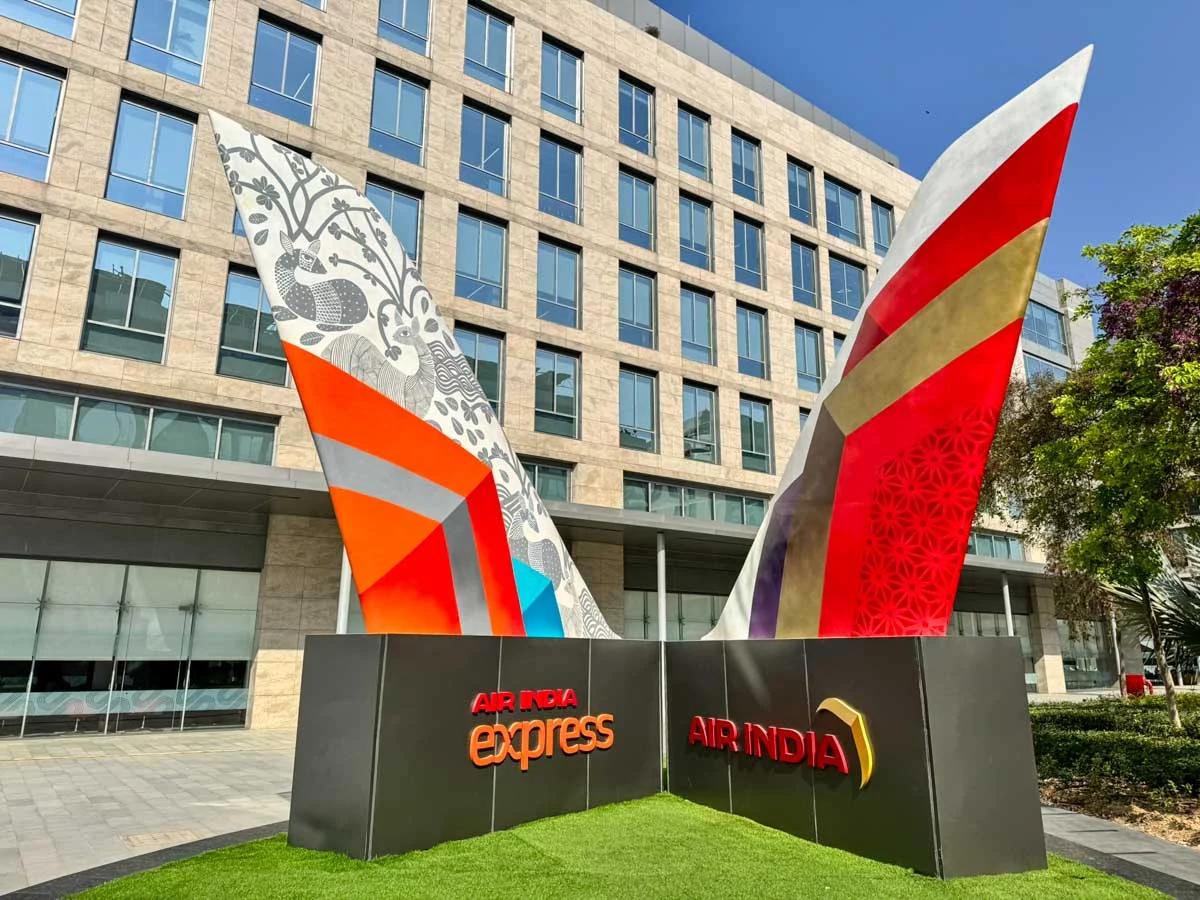
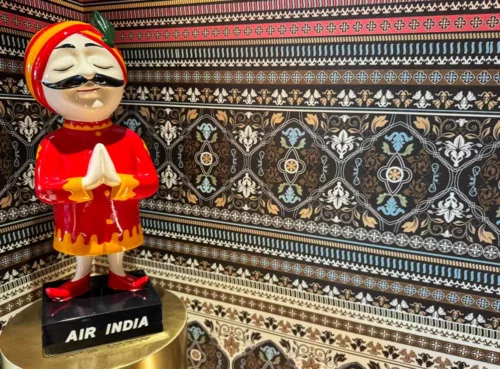
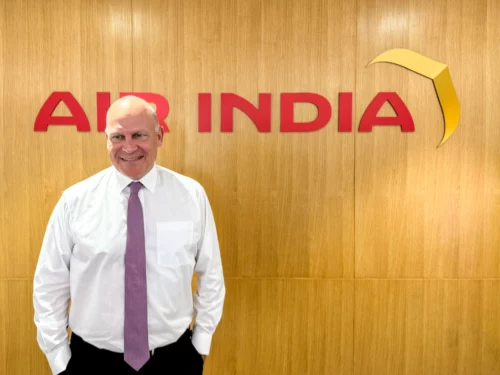
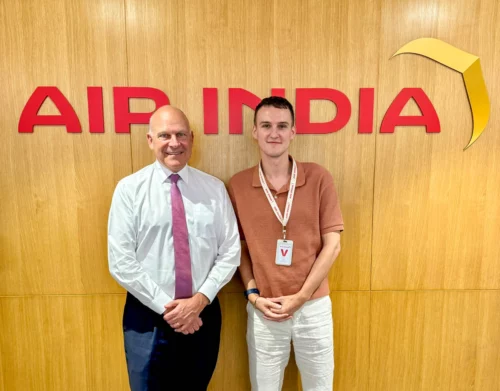
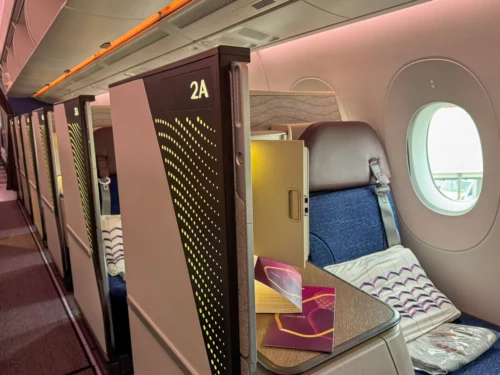
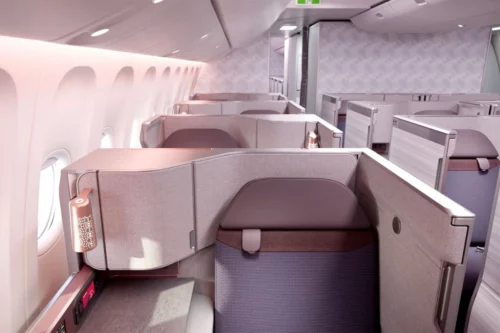
 Rhys
Rhys 





Comments (30)